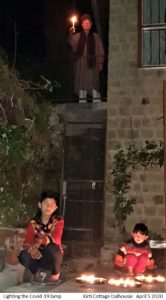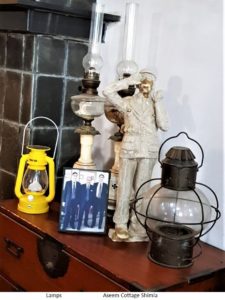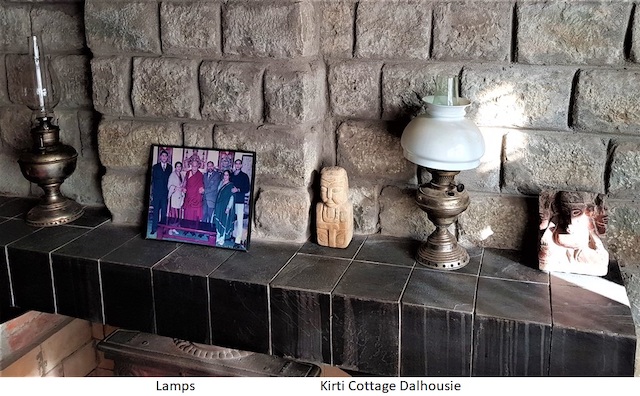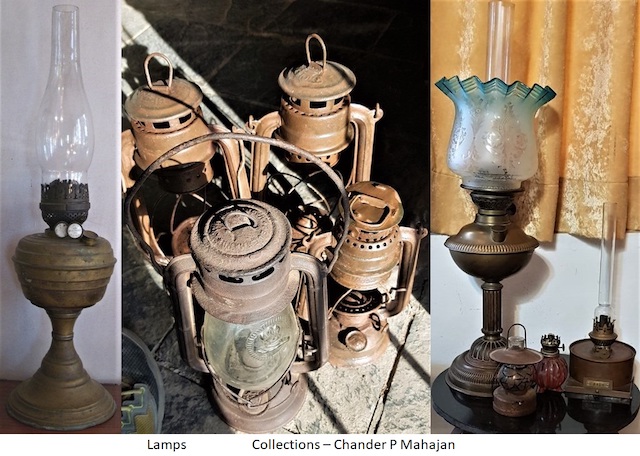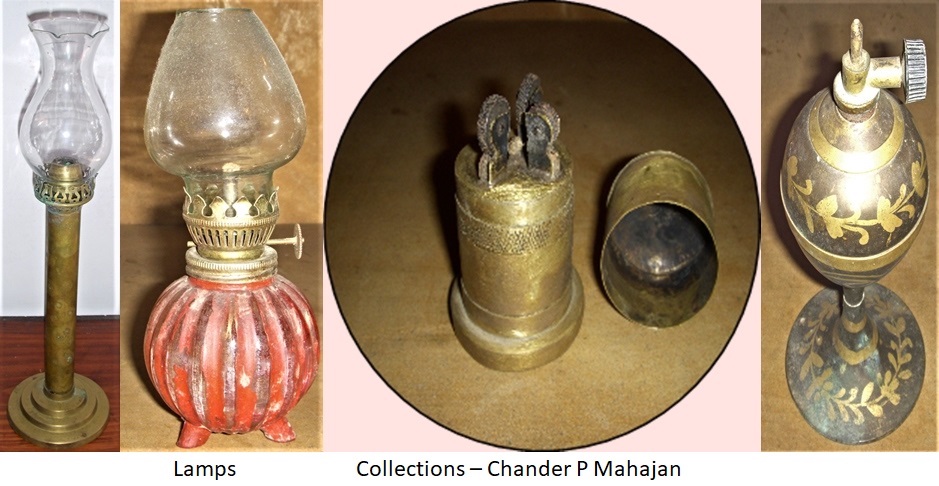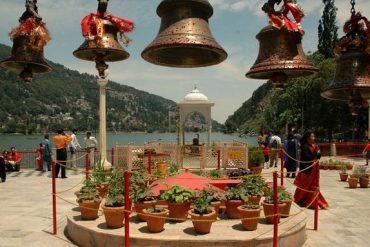To “challenge the darkness” of Covid-19, People across India lit lamps at their doors and balconies for 9 minutes at 9 PM on April 5, 2020; switching off lights in their houses. ‘We must shine a light on the ones who are the most affected by the coronavirus pandemic.’
“Salutations to the light of the Lamp which brings auspiciousness, health, and prosperity and destroys inimical feelings; salutations to the light of the Lamp.”
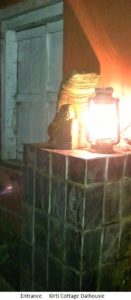
- Oil lamps were used well into the 20th century before the use of electric lights.
While fire could be destructive, light was given a positive spiritual meaning. - Deep is symbolic of the journey from ‘darkness and ignorance’ to ‘light and the knowledge of the ultimate reality – “tamaso ma jyotirgamaya”.
- Over the years various rituals and customs were woven around an oil lamp .‘Deep Daan’, the gift of a lamp is still believed to be the best daan (donation).
- In many Indian households, the lamp burns all day, but in other homes, it is lit at sundown.
- A diya placed in temples and used to bless worshippers is referred to as an ‘aarti’.A similar lamp called a butter lamp is used in Tibetan Buddhist offerings as well.
- Traditional Indian earthenware oil lamp or diya is lit on Diwali.
- Lamps appear in the Jewish sources as a symbol of “lighting” the way for the righteous, the wise, and for love and other positive value.
- Today these lend an ambiance to the environs. I look back at my ‘family collection’ of the lamps.
- Whale oil and other burning fluids- ghee or vegetable oils were used for light at the beginning of the 19th century, long before electricity was available.
- Later, kerosene became the fuel of choice for lamps.
- The Kerosene lamp is produced in two parts, the upper part a mantle with a fibrous wick as a light source and the lower part with the fuel chamber; giving the lamp a controlled flame-protected by a glass chimney or globe. The lamp burns kerosene drawn up through a wick by capillary action.
- The glass chimney needs a “throat” for complete combustion of the fuel; the draft carries more air (oxygen) past the flame, helping to produce a smokeless light, which is brighter than an open flame would produce.
- The mantle/wick holder has holes around the outer edges.
- When the lantern is lit and a chimney is attached, the thermally induced draft draws air through these holes and passes over the top of the mantle. This has a cooling effect and keeps the mantle from overheating.
- Lamps may be used on a table, or hand-held lanterns may be used for portable lighting.
- A kerosene lantern, also known as a “hurricane lantern”, is a flat-wick lamp made for portable and outdoor use, typically featuring a protective enclosure for the light source.
- Historically, usually a wick in oil, and often a battery-powered light in modern times — to make it easier to carry and hang up, and make it more reliable outdoors or in drafty interiors. Lanterns may also be used for signaling, as torches, or as general light sources outdoors.
- The lantern enclosure is primarily used to prevent a burning candle or wick from being extinguished from wind, rain, or other causes. Another important function is to reduce the risk of fire should a spark leap from the flame or the light be dropped.
- The portable kerosene “glass globe” lanterns have the effect of removing side-to-side drafts and thus significantly reducing or even eliminating the flickering that can occur with an exposed flame.
The name “Aladdin” is commonly associated with the brand of kerosene lamps.
- The World Health Organization considers kerosene to be a polluting fuel and recommends that “governments and practitioners immediately stop promoting its household use.”
Life, the LIGHT of divinity, wisdom, intellect, and good works are all manifestations of the symbolic nature of the lamp.
Decorative landscape lighting can be a variety of colours and sizes.
Somehow, I like the coloured glass and rare models. Like many antiques, identification marks can be one of the best ways to tell what you have and how old it is. You may find glass identification marks on the lamp, but the burner hardware is also the place to find real answers.
Staying in the light keeps the depression at bay.
………………………………………………………………………………………………………………………………………………….
Prof. (Er.) Chander P Mahajan is an art critic & a free lance journalist. The Environmentalist stays in Shimla and Dalhousie, Himachal Pradesh, India.



